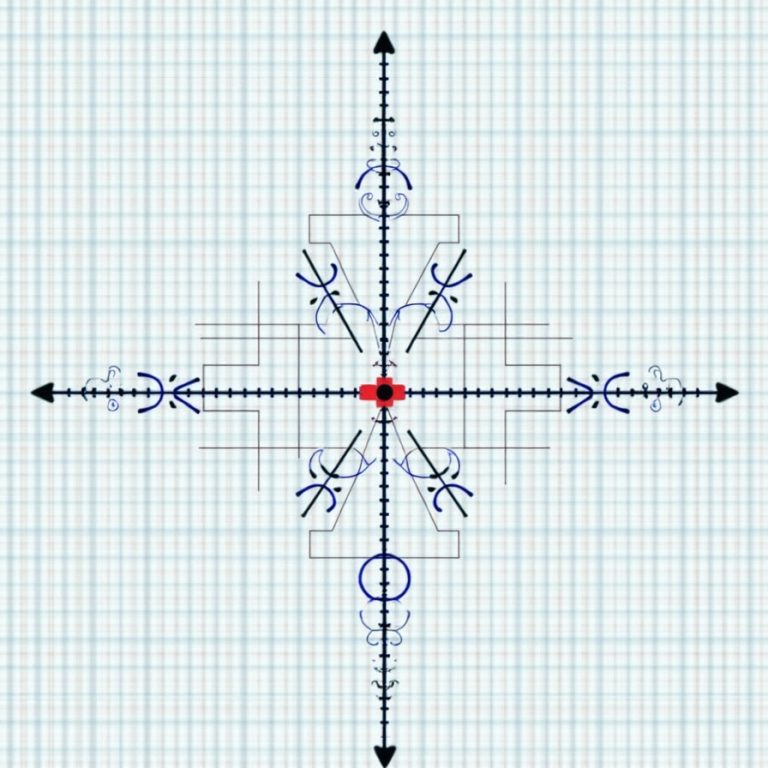Geometric Circles

A Basic Overview
Geometric Circles Circles have been regarded as the purest shape since ancient times. Let’s examine some of the fundamentals of circles.
Circles have been regarded as the purest shape since ancient times. This is probably due to the fact that celestial bodies that were connected to the gods, including planets and moons, were round to the unaided eye. Beyond their cultural relevance, however, circles have amazing qualities and characteristics that have influenced how we think about geometry, trigonometry, complex numbers, and other mathematical ideas. Let’s examine some of the fundamentals of circles.Geometric Circles
The meaning of a circle
Despite being a pretty basic form visually, many students find it difficult to articulate what a circle actually is. The path that a point takes so that it is always at a fixed distance “r” from point O is known as a circle. Here, O is the circle’s center, and “r” is its radius.Geometric Circles
Making a circle
By putting the tip of one leg in the center, spinning a full turn around the center, and changing the distance between the legs to the necessary radius, one can use a compass to manually construct a circle.
At least three different spots on the circle are necessary, though, if the precise center is uncertain. This is due to the fact that in 2D space, a unique circle must be defined by at least three different points on its circumference.
In such a situation, take the following actions to create a circle:Geometric Circles
Step 1: Make a triangle by joining the points.
Step 2: On any two sides of the triangle, draw two bisectors that are perpendicular to each other.
Step 3: The perpendicular bisectors’ intersection point will be the midpoint of the circle that connects the triangle’s three vertices.
Step 4: Adjust the legs from the center to any location using a compass. Next, finish the circle.

The triangle’s circumcircle is another name for the design seen above. Keep in mind that the three points must be separate and not in a straight line.
Characteristics of a circle
Numerous characteristics are helpful in characterizing different geometrical attributes of circles. Among the key elements are:Geometric Circles

- The radius is the separation between any point on the circle and its center.
- The line that connects two points on a circle is called a chord.
- Diameter: The length of the line that connects two points on the circle through the circle’s center. The diameter, which is twice the radius of a circle, is its longest chord.
- The term “arc” refers to a segment of a circle’s circumference.Geometric Circles
- Circumference: A circle’s outermost point
- Sector: A sector is a region that is bounded by an arc and two radii.
- Segment: An area bounded by an arc and a chord.
- A line drawn to touch a circle at a single point is called a tangent.
The Circle and Pi
The most well-known mathematical constant that comes from studying circles is pi. Numerous academic disciplines, including geometry, algebra, and complex numbers, make extensive use of it. Studying circles led to the derivation of the irrational number pi. Although ancient mathematicians knew that a circle’s diameter was proportionate to its size (circumference), figuring out the precise ratio was difficult in geometry. Circumference/Diameter = pi, which is the ratio of a circle’s circumference to its diameter.Geometric Circles
A circle’s area
In contrast to polygons, ancient mathematicians had a difficult time figuring out how much space a circle took up. We now know that the formula A = pi*r^2 may be used to determine the area of a circle, thanks to the contributions of mathematicians such as Archimedes and Heron of Alexandria.Geometric Circles
Easy Way to Determine a Circle’s Area
We can employ a visual technique to better comprehend why the formula functions.Geometric Circles
Imagine dividing a circle into sectors and placing them in a row. A rectangle with length pi*r and height equal to the radius itself is produced by this configuration. This rectangle offers a practical method for figuring out the circle’s area. The formula for the area of a circle is obtained by multiplying the rectangle’s length by its width.Geometric Circles
Sectors’ arc length
Part of a circle’s circumference, the arc length is proportional to the central angle. For instance, since the central angle of a semicircle is 180 degrees (half of a full circle is 360 degrees), the arc length would be half of the circumference.
The following generalized formula can be used to calculate the sector’s arc length:
x Circumference (θ/360). In this case, θ stands for the sector’s center angle. Calculating the arc length is essential when dealing with circular structures or routes. Actually, this idea was used in the first estimations of the Earth’s diameter and circumference. The Greek mathematician Eratosthenes determined the separation between two cities more than 200 years ago (the v arc length) and calculated the arc’s center angle to estimate the circle’s entire circumference and, thus, the Earth’s diameter.Geometric Circles
Sectoral area
An entire circle includes a sector. The following formula can be used to determine the area if we know what percentage of the circle the sector covers:
Sector area is equal to the fraction of the circle times the area of the entire circle.
To find the percentage of the circle that the sector covers, we frequently utilize the central angle. For instance, the fraction would be 45/360 if a sector’s central angle was 45 degrees. The above formula can be broadly expressed as follows:
The sector’s center angle is 360 * π * r^2.
Conclusion
In addition to being fascinating shapes, circles are essential in many branches of science and mathematics. Circles are important in many areas, from elementary geometry to complex mathematics. Understanding the radii, diameters, chords, and tangents of circles is crucial to comprehending their behavior and uses.
Ratio between a right triangle’s three sides’ sizes. The Pythagorean theorem has many applications in disciplines like physics, engineering, and architecture. Examples of methods based on the Pythagoras theorem that can be useful for everyone to use in everyday circumstances include the 3-4-5 approach and the shortest distance calculation.




